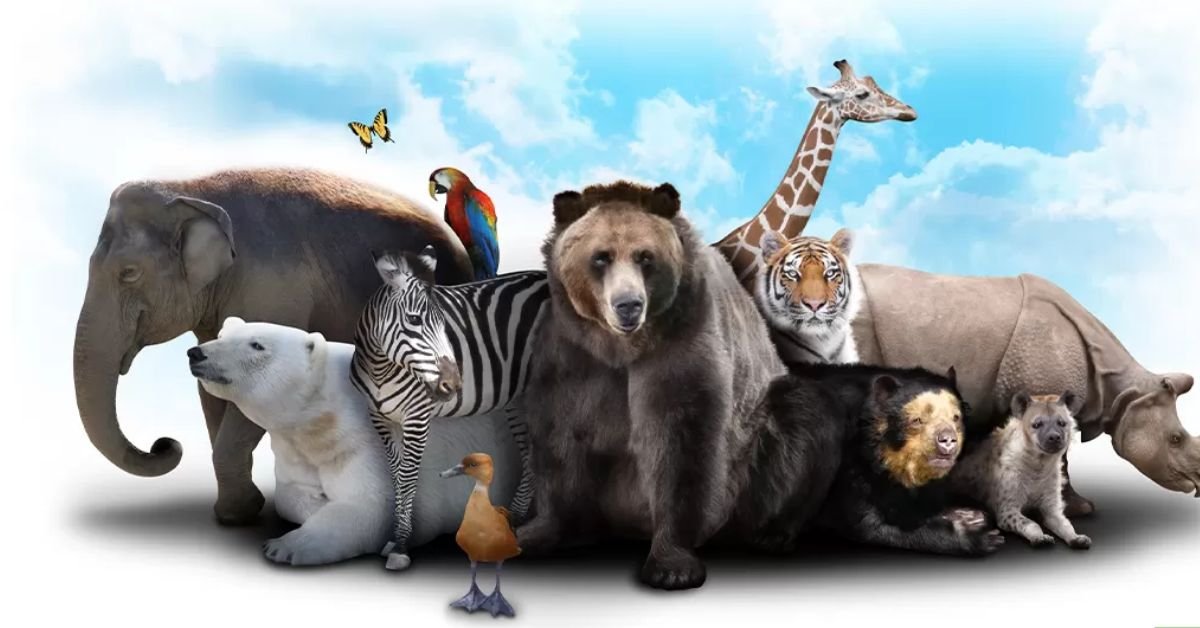The question of “how many species are there in the world?” is more complex than it first appears. While estimates range widely, scientists have cataloged about 1.2 million species so far. However, it’s widely accepted that this is just a fraction of the total number of species. Some experts estimate there could be 8.7 million species on Earth, while others suggest the number could be even higher, potentially reaching 10 million or more when considering microorganisms and unexplored habitats. The sheer complexity of life, from dense tropical rainforests to the depths of the ocean, makes this an ever-evolving question.
Also Read: Jodean Bottom
Defining a Species
Before diving into the numbers, it’s important to understand what qualifies as a species. In biological terms, a species is generally defined as a group of organisms that can interbreed and produce fertile offspring. However, this definition has some grey areas, especially when dealing with microorganisms or species that reproduce asexually.
The Importance of Species Classification
Classifying species is essential for understanding the evolutionary relationships between different organisms and their role in ecosystems. Without a clear classification system, it would be nearly impossible to track the health of ecosystems or to identify which species are at risk of extinction.
Current Estimates of Species Count
How Many Species Have Been Discovered?
As of today, scientists have formally described around 1.2 million species across all kingdoms of life. This includes plants, animals, fungi, and microorganisms. Yet, experts agree this number is only the tip of the iceberg.
Estimates of Undiscovered Species
Recent studies suggest that the number of undiscovered species could be staggering. Estimates often hover around 8.7 million species, with many scientists suggesting we may have only discovered 15-20% of the total species on Earth. Most undiscovered species likely inhabit remote or unexplored ecosystems, such as the deep ocean or dense rainforests.
Species Diversity Across Different Kingdoms
Bacteria and Microorganisms
One of the most challenging groups to estimate in terms of species diversity is bacteria and microorganisms. These organisms are incredibly diverse and abundant, with billions of individuals thriving in every habitat on Earth. Some estimates suggest there could be trillions of bacterial species alone, though many are yet to be studied.
Plants and Fungi
The plant kingdom is another highly diverse group, with around 390,000 plant species identified so far. Fungi, although less studied, are believed to encompass over 2 million species, yet only about 100,000 have been described scientifically.
Animals: From Insects to Mammals
Animals represent one of the most studied groups. While there are around 1 million species of insects documented, experts believe there could be up to 5.5 million undiscovered insect species alone. In contrast, mammals are relatively easier to study, with around 6,500 species known, though this number is steadily increasing with new discoveries.
Insects: The Dominant Species Group
The Incredible Variety of Insects
Insects make up the largest portion of the known species on Earth, accounting for around 75% of all documented species. Beetles, ants, and butterflies alone represent an enormous diversity of life forms, each playing a crucial role in ecosystems.
Why Insects Make Up the Majority of Species
Insects are small, adaptable, and thrive in nearly every environment. Their ability to occupy a wide range of ecological niches and reproduce quickly makes them dominant in terms of both numbers and diversity. This helps explain why they are the most species-rich group on Earth.
Marine Species: The Underwater Frontier
Estimating Species in the Ocean
The ocean remains one of the least explored areas of our planet, and it’s believed that 91% of marine species are yet to be discovered. Current estimates suggest there may be around 2.2 million marine species, but many remain unknown due to the vastness and inaccessibility of deep-sea habitats.
Challenges in Discovering Marine Life
Exploring marine environments is expensive and logistically challenging, which is why so many species in the ocean remain undiscovered. However, advancements in underwater exploration technologies are shedding new light on the biodiversity beneath the waves.
The Role of Technology in Species Discovery
How Modern Tools Aid in Identifying New Species
The use of technology in species discovery has accelerated dramatically in recent years. DNA barcoding, a method of identifying species using a short genetic sequence from a standardized region of the genome, has made it easier to differentiate between species that look identical but are genetically distinct.
Why So Many Species Remain Undiscovered
Unexplored Habitats
Many species remain undiscovered because vast areas of the Earth, including tropical rainforests, deep oceans, and polar regions, have not been fully explored. These areas are difficult to access and require sophisticated technology and extensive fieldwork for proper study.
Cryptic Species and Their Hidden Presence
Some species are cryptic, meaning they look nearly identical to other species but are genetically distinct. This makes them particularly hard to identify without the use of advanced tools like DNA analysis.
Extinction vs. Discovery: A Race Against Time
Species Going Extinct Before Discovery
Unfortunately, species are disappearing at an alarming rate due to habitat destruction, climate change, and other human activities. It’s estimated that 150-200 species go extinct every day, which means many species could be lost before they are even discovered.
Conservation Efforts and Their Impact
Conservation plays a critical role in slowing down extinction rates. Protected areas, wildlife reserves, and international conservation laws help safeguard habitats and species, giving scientists more time to discover and catalog them.
Endangered Species and Global Biodiversity
Human activity has had a profound effect on global biodiversity. The International Union for Conservation of Nature (IUCN) estimates that over 28,000 species are currently at risk of extinction. By understanding and protecting these species, we can help preserve Earth’s rich biodiversity.
The Future of Species Discovery
With new technologies, unexplored habitats, and an increasing interest in biodiversity, the future of species discovery looks promising. Citizen science projects, where everyday people help scientists collect data, are also playing a major role in identifying new species.
**Species Richness in Tropical Rainfore
sts**
Tropical rainforests are the most biologically diverse ecosystems on Earth. Despite covering only about 6% of the Earth’s surface, they are home to more than 50% of the world’s species. The warm, humid climate and dense vegetation provide the perfect environment for a wide variety of life forms to thrive.
Case Studies of Species Discovered in Rainforests
In recent years, expeditions into tropical rainforests have yielded many exciting discoveries. For example, in the Amazon rainforest alone, scientists discover a new species approximately every two days. These include not only insects and plants but also reptiles, amphibians, and mammals that had previously gone unnoticed due to the thick forest canopy and isolated terrain.
Species in Polar Regions
Unique Adaptations of Species in Cold Climates
Polar regions, though harsh and frigid, are home to a surprising array of species uniquely adapted to the extreme cold. From the microscopic tardigrades that can survive freezing conditions to iconic animals like the polar bear and emperor penguin, these regions showcase life forms with remarkable survival strategies.
Exploring the Relatively Untouched Polar Ecosystems
Polar ecosystems are some of the least explored habitats on Earth, mainly due to their remote locations and extreme conditions. However, ongoing research, aided by satellite technology and submersible vehicles, is revealing more about these environments every year.
Misconceptions About Species Count
Why Estimates Vary Greatly
The reason estimates of species numbers vary so much lies in the difficulties of exploring all ecosystems and accurately classifying species. Some groups, like insects, have millions of species that remain unclassified, while microorganisms are so diverse that pinpointing their exact numbers is nearly impossible.
Common Misunderstandings in Species Numbers
A common misconception is that the discovery of species is a straightforward process. However, new species are often identified by slight genetic variations that aren’t immediately visible, making the work complex and sometimes controversial.




